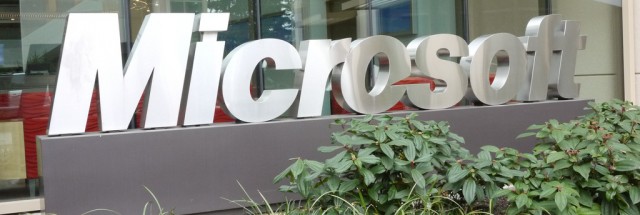
Microsoft has posted the results of the second quarter of its 2019 financial year, which runs up to December 31, 2018. Revenue was $32.5 billion, up 12 percent year-on-year; operating income was $10.3 billion, up 18 percent; and net income was $8.6 billion, as compared to a $6.3 billion loss due to the impact of the Tax Cuts and Jobs Act one year ago. Earnings per share were $1.08, as compared to a loss of $0.82.
Microsoft currently has three reporting segments: Productivity and Business Processes (covering Office, Exchange, SharePoint, Skype, Dynamics, and LinkedIn), Intelligent Cloud (including Azure, Windows Server, SQL Server, Visual Studio, and Enterprise Services), and More Personal Computing (covering Windows, hardware, and Xbox, as well as search and advertising).
Productivity group revenue was up 13 percent to $10.1 billion, with operating income up 20 percent to $4.0 billion. Commercial Office revenue was up 11 percent, with seat growth of 27 percent; this growth continues to be driven by the shift to cloud, with Office 365 revenue up 34 percent but perpetually licensed revenue down 21 percent. Consumer Office revenue was almost flat, growing by just 1 percent. This drop in growth comes after a series of strong quarters; a year ago, Office consumer revenue was up 12 percent, with the intervening quarters showing growth of 12, 8, and 16 percent. Microsoft says that Office 365 subscriptions were up, now totaling 33.3 million, but the weaker-than-expected PC market offset this growth. Dynamics revenue grew by 17 percent, and LinkedIn by 29 percent.
Intelligent Cloud revenue grew 20 percent to $9.4 billion, with operating income up 16 percent to $3.3 billion. Overall there was a split between server product and cloud revenue, growing 24 percent, and Enterprise Services, up 6 percent. Azure revenue was up 76 percent (identical to the previous quarter) suggesting that perhaps the days of Azure growing by 90 or more percent year-on-year are behind us. Azure is still growing vigorously, but as it becomes larger and more mature, the near-doubling each year that it enjoyed before becomes harder to achieve. It remains an area of significant investment, with Microsoft expecting capital expenditure to grow moderately. On-premises server product revenue was up 3 percent, with the newly acquired GitHub providing some of that growth. Microsoft now has some 94 million seats managed with its Enterprise Mobility Suite, up 57 percent year on year.
The More Personal Computing division saw revenue growth of 7 percent to $13.0 billion, with operating income up 18 percent to $3.0 billion. After several quarters that saw commercial-oriented Windows Pro revenue grow, this quarter saw it fall by 2 percent year-on-year; the decline of the consumer-oriented Windows revenue also fell more sharply than in previous quarters, declining by 11 percent.
Intel issues
The slow down of the PC market is widely observed, but Microsoft’s commentary on it this quarter was perhaps a little surprising: CFO Amy Hood described the market as “otherwise healthy,” but said that OEMs were hit by the “timing of chip supply,” reducing Windows OEM revenue by some 1.5 percent. Though Hood didn’t name names, this suggests that Intel’s continued difficulties in moving to 10nm manufacturing is causing issues for the wider PC market.
There are likely two aspects to this. First, there appears to be limited supply of 14nm chips. Intel had expected its 14nm manufacturing capacity to at this point be supplemented by 10nm; since that hasn’t happened, the company has found itself with more demand for 14nm manufacturing than it can fulfill. The chip company has made additional investment to increase 14nm capacity, with upgrades in Ireland, Israel, and New Mexico, but this isn’t instantaneous.
Second, the 10nm processors coming later this year will use a new architecture that gives the first meaningful improvement in Intel’s single-threaded performance since 2015. This is likely to stimulate a wave of upgrades and new purchases, but with the chips still not on the market, that obviously hasn’t happened yet.
Surface revenue showed a healthy increase, growing 39 percent to $1.9 billion, with the company reporting growth across both consumer and corporate sales. Gaming revenue was also up some 8 percent, driven by 31 percent growth in software and services revenue, against a 19 percent decline in hardware revenue. Xbox Live monthly active users hit 64 million, up 8 percent. CEO Satya Nadella says that gaming continues to be an area of investment for the company; it has bought a number of studios over the last year. Nadella also said that the xCloud streaming service—which should bring console quality gaming to smartphones, slim set-top boxes, consoles, and PCs—will begin public trials later this year. The company is also investing in gaming infrastructure, with Nadella claiming that PlayFab, acquired last year, has surpassed one billion player accounts.
Be the first to comment